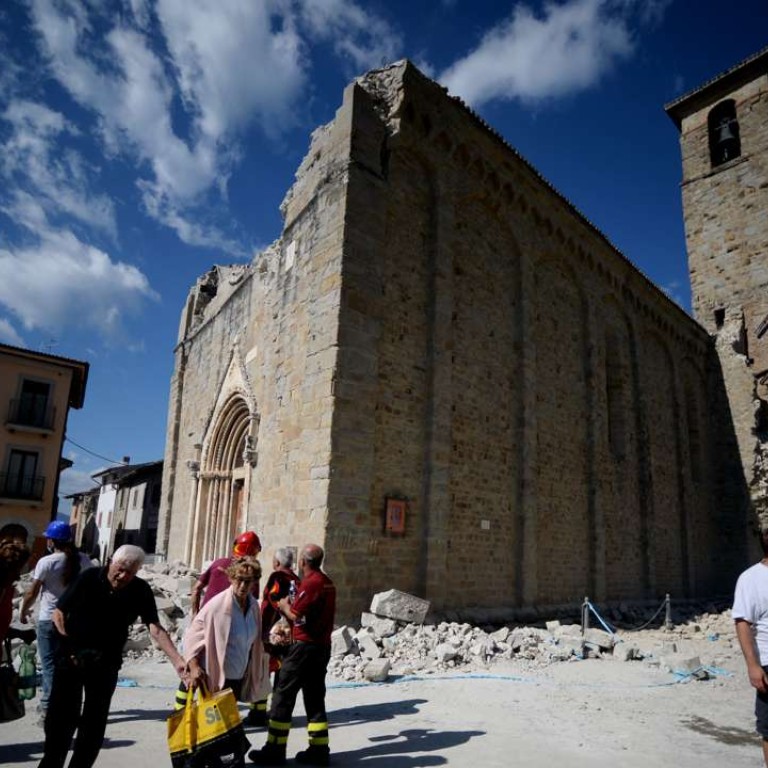
Irreplaceable: art experts fear the worst after earthquake damages historic Italian buildings
The Dutch classicist David Rijser, an expert on the culture of Abruzzo, said there had been damage to the central region’s many churches, funeral monuments and museums. “It has been a true drama, there is a lot that has been lost,” he told Dutch radio.
It has been a true drama, there is a lot that has been lost
Some of the greatest destruction was in Amatrice, which last year voted one of Italy’s most beautiful towns, celebrated for its Cento Chiese, 100 churches filled with frescos, mosaics and sculptures. Half the facade of the 15th-century church of Sant’Agostino has collapsed, taking with it the beautiful rose window. The courtyard of one of the town’s Renaissance palaces has been turned into a temporary morgue.
The town clock in the 16th-century bell tower remains frozen at just after 3.36 am, the moment the earthquake struck. “Half the town no longer exists,” its Mayor, Sergio Piorizzi, said despairingly.
The mayor of l’Aquila, a town where 300 people died in the devastating 2009 earthquake, has promised to take in hundreds left homeless in Amatrice.
In Pescara del Tronto the clock tower is the tallest structure amid the rubble of collapsed buildings in the historic core of the hilltop village.

Many historic buildings are also feared lost or damaged in Norcia, the birthplace of Saint Benedict. The 12th-century basilica, which is said to have been built on the foundations of his house, had been damaged, Father Benedict Nivakoff told the Catholic News Service, although all the monks were safe.
Other historic buildings feared at risk include a museum housed in a medieval fort, 14th-century frescoes in the church of St Augustine as well as the Roman walls, survivors of many earthquakes, which still partly encircle the town.
Further damage is feared to buildings still under repair after the 2009 earthquake, including the beautiful 13th-century church of Santa Maria di Collemaggio, the burial place of Pope Celestine V, which was still closed for restoration work on the collapsed cupola and arches. There are now fears for the church’s spectacular facade with its delicate rose windows and alternating blocks of pink and white stone.

One of the most spectacular casualties of the 1997 earthquake in 1997, the Basilica of St Francis of Assisi with its magnificent frescoes by Giotto and Cimabue, was reported safe this time.
Cracks were reported in buildings as far from the epicentre as Rome, including in the spectacular baths of Caracalla.
The Italian culture ministry said that while saving lives and helping the homeless had to be the priority in the immediate aftermath of the earthquake, there would be a meeting on Thursday to assess the scale of cultural damage.

